An old English technique for embellishing brick masonry has evolved into a new meaning in modern times that, often, further reflects local custom and usage. In Chicago, where its mix of weather has necessitated more tuck pointing than any city of its size in the world, the terms tuck pointing, tuckpointing, re-pointing and pointing are used interchangeably. Unlike its use in technical manuals, the terms in Chicago refer to the application of fresh mortar within weathered joints – without the preparatory cutting or grinding back of the mortar joint. This often desirable preparation is usually specified separately as part of a two-step process of “grinding and pointing.”
Whether tuck pointing is performed for leak repair, maintenance or cosmetic purposes, Central is the most experienced in providing an effective, lasting and visually attractive result.
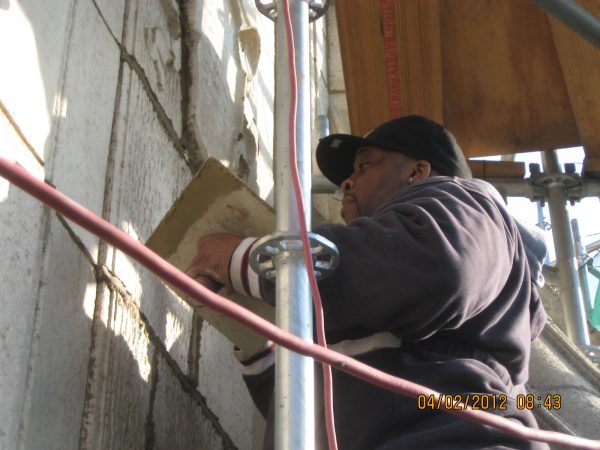
Tuckpointing Gallery
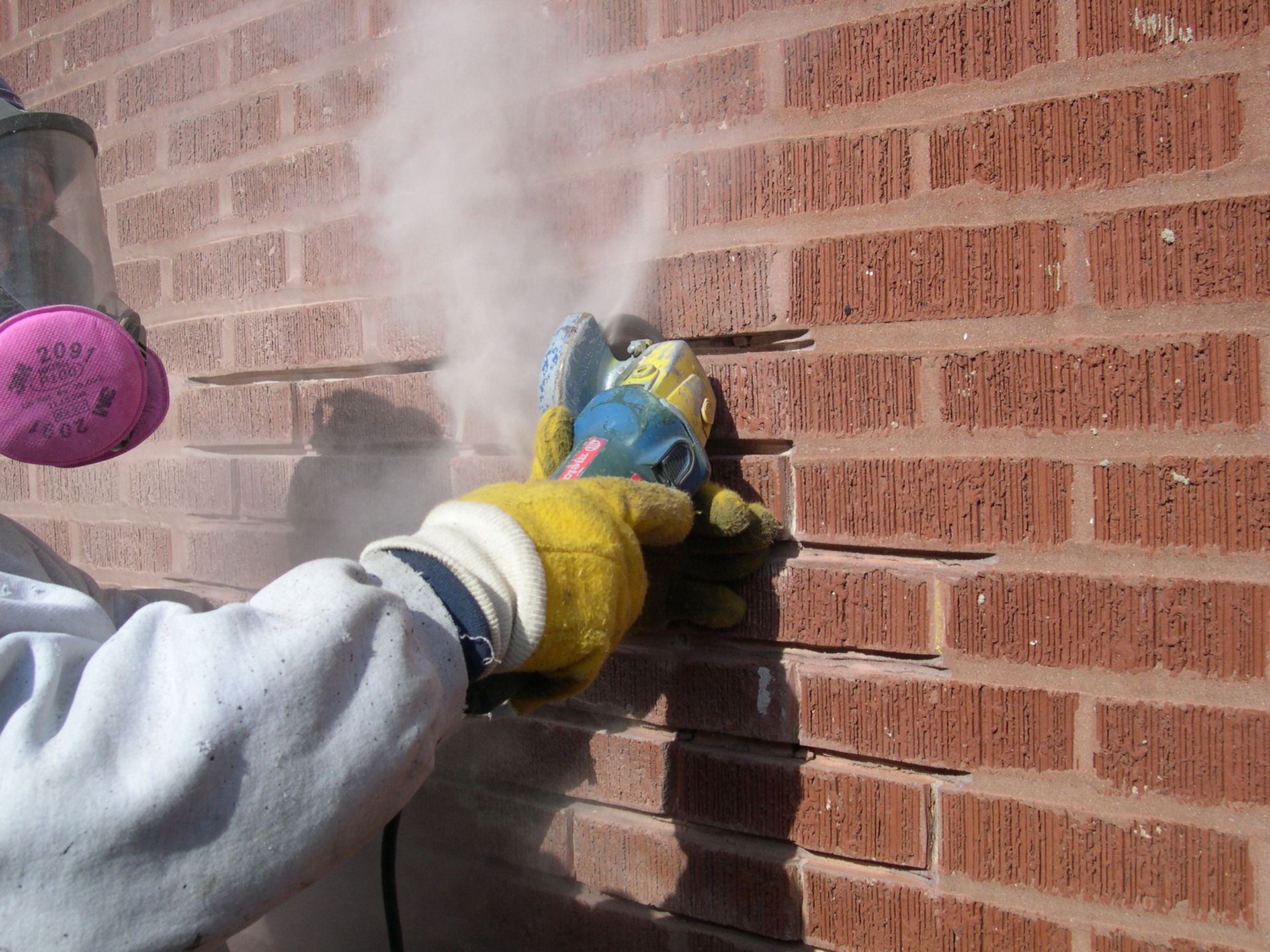 In order for joints to be tuckpointed, old mortar must be ground from their joints using a grinder.
In order for joints to be tuckpointed, old mortar must be ground from their joints using a grinder.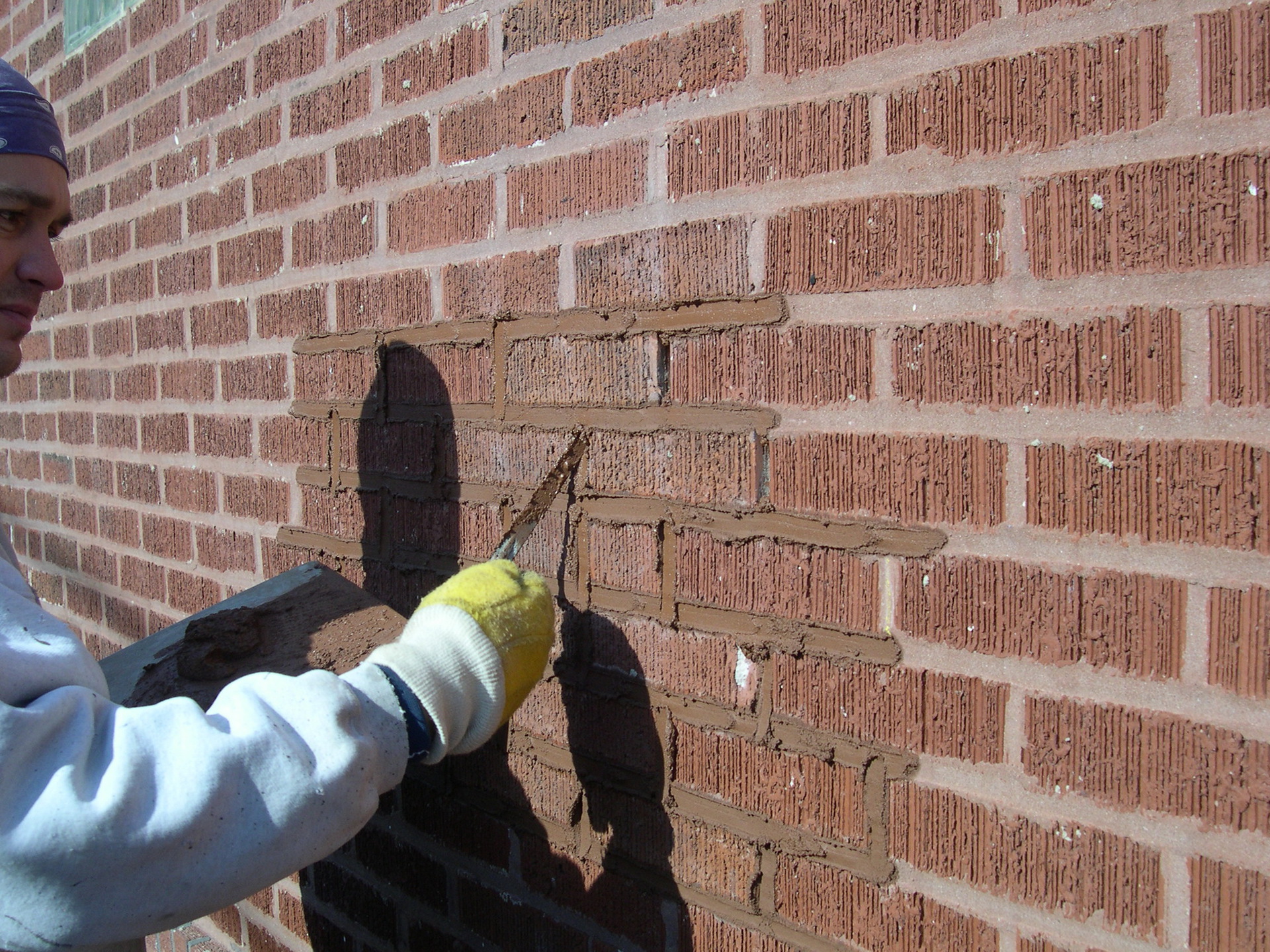 After a joint has been ground out, it is cleaned and new mortar is installed.
After a joint has been ground out, it is cleaned and new mortar is installed.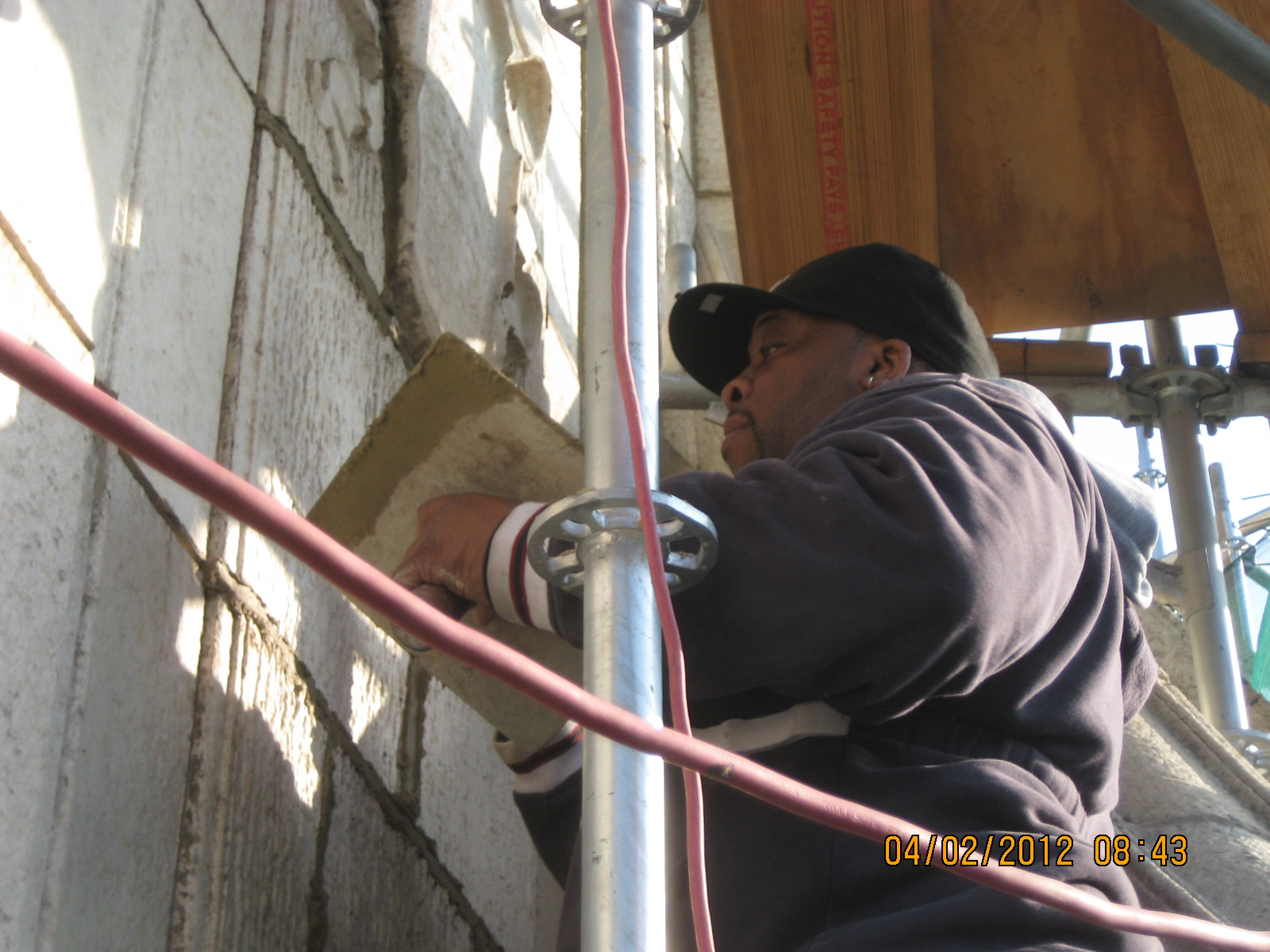 A Central employee applies fresh mortar to a terra cotta façade.
A Central employee applies fresh mortar to a terra cotta façade.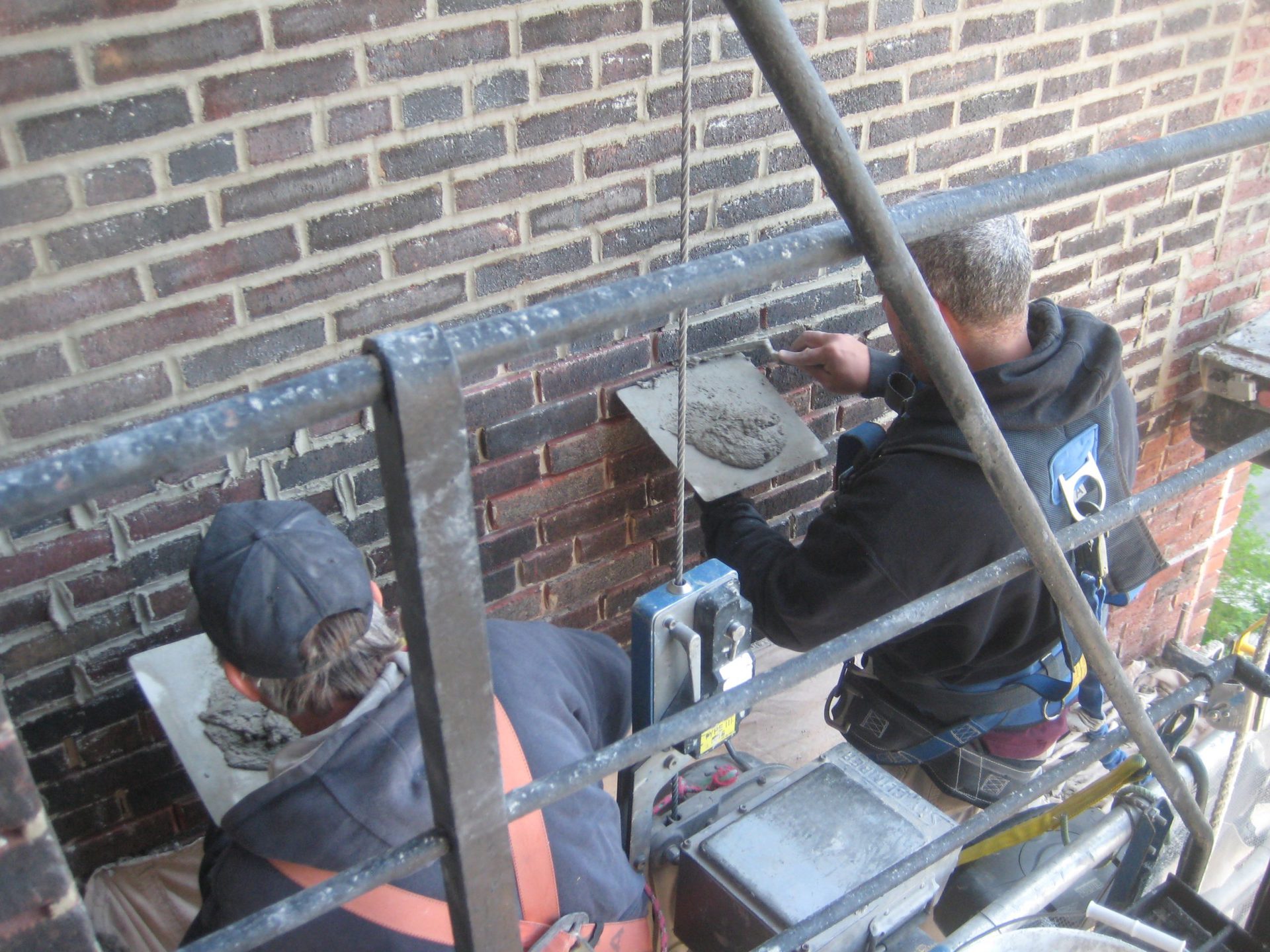 Tuckpointers push fresh mortar from their “hawks” into open mortar joints.
Tuckpointers push fresh mortar from their “hawks” into open mortar joints.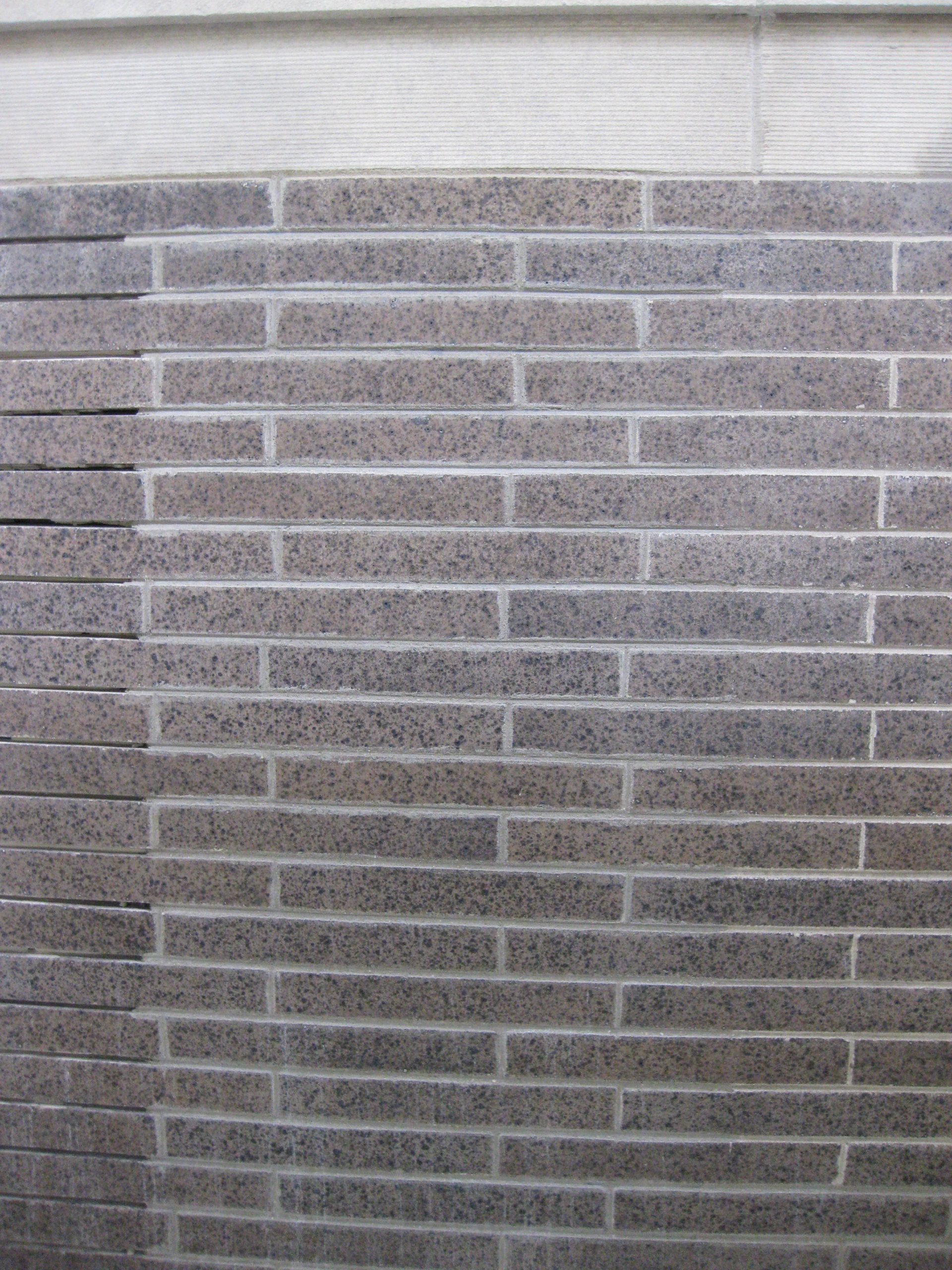 The thin mortar joints between these roman bricks are sometimes referred to as “butter joints”.
The thin mortar joints between these roman bricks are sometimes referred to as “butter joints”.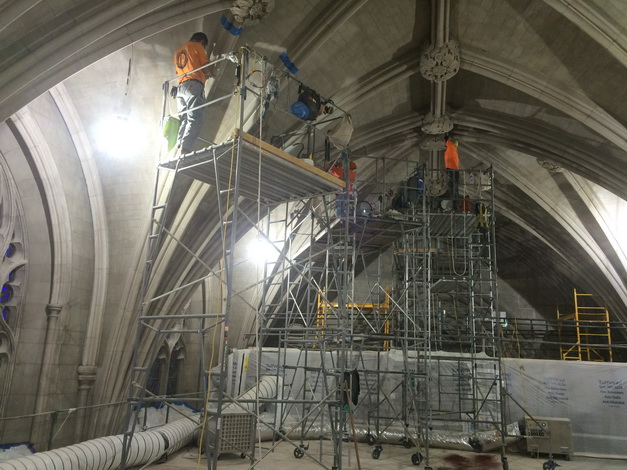 The interior of Duke University’s chapel is being pointed with extreme care using blue painters tape to ensure fresh mortar does not smear on to the stone.
The interior of Duke University’s chapel is being pointed with extreme care using blue painters tape to ensure fresh mortar does not smear on to the stone.

